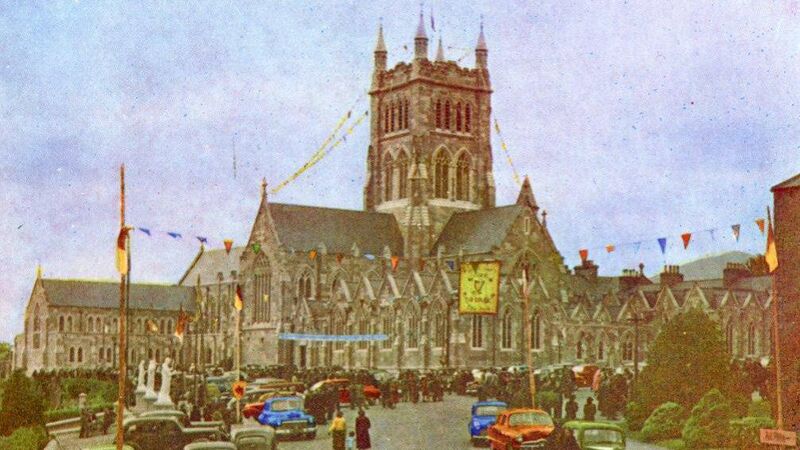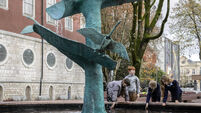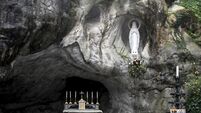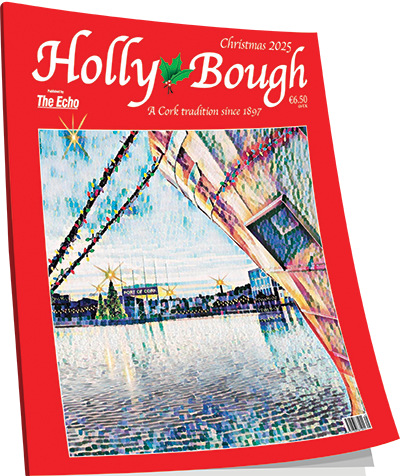A final silence set to descend on esteemed Mount Melleray

Thus wrote an Australian visitor to famed Mount Melleray, in an article published in the in March 1902. In a long and in-depth piece, the author gave a brilliant and meaningful description of daily life in the West Waterford Abbey.
Founded in 1833, when a group of Cistercian monks who had been forced to leave France settled on a bleak mountainside, Mount Melleray now faces an uncertain future.
In ten days’ time, the small group of remaining monks will leave their Waterford home and join their confreres from Mellifont in Louth, in Roscrea.
Mount St Joseph’s Abbey on the Tipperary/Offaly border will, for the time being at least, be the new centre for the Cistercian community, to be named the ‘Abbey of Our Lady of Silence’. The plan is that over the next year the Melleray, Roscrea and Mellifont monks and priests will contemplate their future and that of their three Irish foundations.
There is a genuine and widespread sense of sadness pervading West Waterford and East Cork at present as a result of the Melleray closure announcement just before Christmas. Lack of vocations and the ageing community are the factors which finally influenced the decision.
Founded in 1098 by St Robert of Molesme, the Order celebrates its Feast Day on January 26, and in 2025 it will be a poignant and tearful reminder of a glorious legacy on the hillside outside Cappoquin.
There was always something special about Mount Melleray - not just because ’twas a centre of religion and learning, but it became a beacon of hope and an example of what determination can do.
Having spent his youth in his native city of Waterford, Vincent Ryan, born in 1788, entered the Cistercian Novitiate in Lulworth Park, Dorset, in England. He was ordained a priest in 1815 and became prior of Melleray Abbey in Brittany in France.
A community of more than 200 at Melleray included about 70 Irish-born priests and monks.
Fr Vincent longed to start up a new Cistercian Foundation in Ireland. He came first to Mayo and was offered an 880-acre holding, but it was no more than a huge bare bog with wind blowing in from the sea, not suitable for his purposes.
Fr Ryan was crestfallen, but then ‘got an account’ of a farm of 150 acres near Rathmore in Co. Kerry. The land was fairly good though the rent was high, but Fr Vincent took it on lease for 20 years.
Back in France, religious discrimination was on the rise after the 1830 July Revolution. The French monks in Melleray were imprisoned. The 64 English and Irish ones left the country and, travelling on the battleship Hebe, arrived in Cobh on December 1, 1831.
With Fr Ryan as their spiritual leader, they settled into life at Rathmore, but the place was totally unsuitable. Fr Vincent kept looking for a better location.
Fr Patrick Fogarty, of Dungarvan, informed him that Sir Richard Keane of Cappoquin was willing to offer an extensive expanse of mountain land on a 99-year lease. On a raw day in the month of February, 1832, Fr Ryan surveyed the land. It was the townland of Scrahan - the Irish for coarse land, and well-named!
Back in Rathmore, he consulted with the community, they discussed it, prayed, then agreed to move.
The gamekeepers little house where Fr Ryan first celebrated Mass was named Bethlehem and the whole new foundation would be Mount Melleray - in honour of the French monastery.
Catholic Emancipation had just been granted, in 1829, the population of rural places was huge - even in desolate and marginal land - and the Faith of Our Fathers was cherished openly.
Soon, the ‘meitheals’ came. Workmen from every parish all around came - hundreds of them - to help with the back-breaking work. Fences were erected, drains dug, rocks and stones moved, land cultivated and a basic timber church built.
From Modeligo, Cappoquin, Lismore, Clashmore, Ardfinnan (Tipperary) and Knockanore they came, and turned a mountain into arable land. It is recorded that a force of 150 men left their homes in Ballynoe parish at midnight and began their day’s work at 4am!
The foundation-stone of a new monastery was laid in August 1833, and the work was completed in a few short years.
In 1838, Daniel O Connell visited Melleray and later that year the Monastery Church came into use.
The Community at Mount Melleray grew hugely and from Scrahan near Cappoquin went forth priests and monks to set up new Cistercian Foundations all over the world.
In 1845, Dom Vincent Ryan, founder of Mount Melleray and Abbot for ten years, died.
In August 1933, the Centenary of Melleray’s foundation was celebrated over three days. Guests included Éamon de Valera and William T. Cosgrove.
The Cistercian principles of hospitality and generosity were central to the story of Mount Melleray. I recall an uncle of mine, Jeremiah Twomey, and his friend, Tommy Cashman, speaking of how, as young men, they’d cycle from Castlelyons to Melleray for a weekend retreat during the 1940s. You lived in the guesthouse ‘fed and found’ for a few days or a week. If you could give a donation that was fine, if not - there was never a problem.
That sense of welcome and being part of a special Spiritual community stood Mount Melleray in good stead over the years.
With a brotherhood of well over 100 in the 1960s, I recall visiting as a young fella and being amazed as the long line of monks processed into the chapel. My granny Twomey and Mrs. Sweeney from Fermoy often spent a few days - maybe a week - in Melleray in the 1960s and the crowds there were just amazing.
I read lately that in Vietnam today they have about 1,000 Cistercian monks, so different here in Ireland - but then the Lord works in mysterious ways.
Times are surely a-changing and these next ten days will, I’m sure, see hundreds - maybe thousands - take that road out from Cappoquin once more.
Mai O Higgins







 App?
App?







